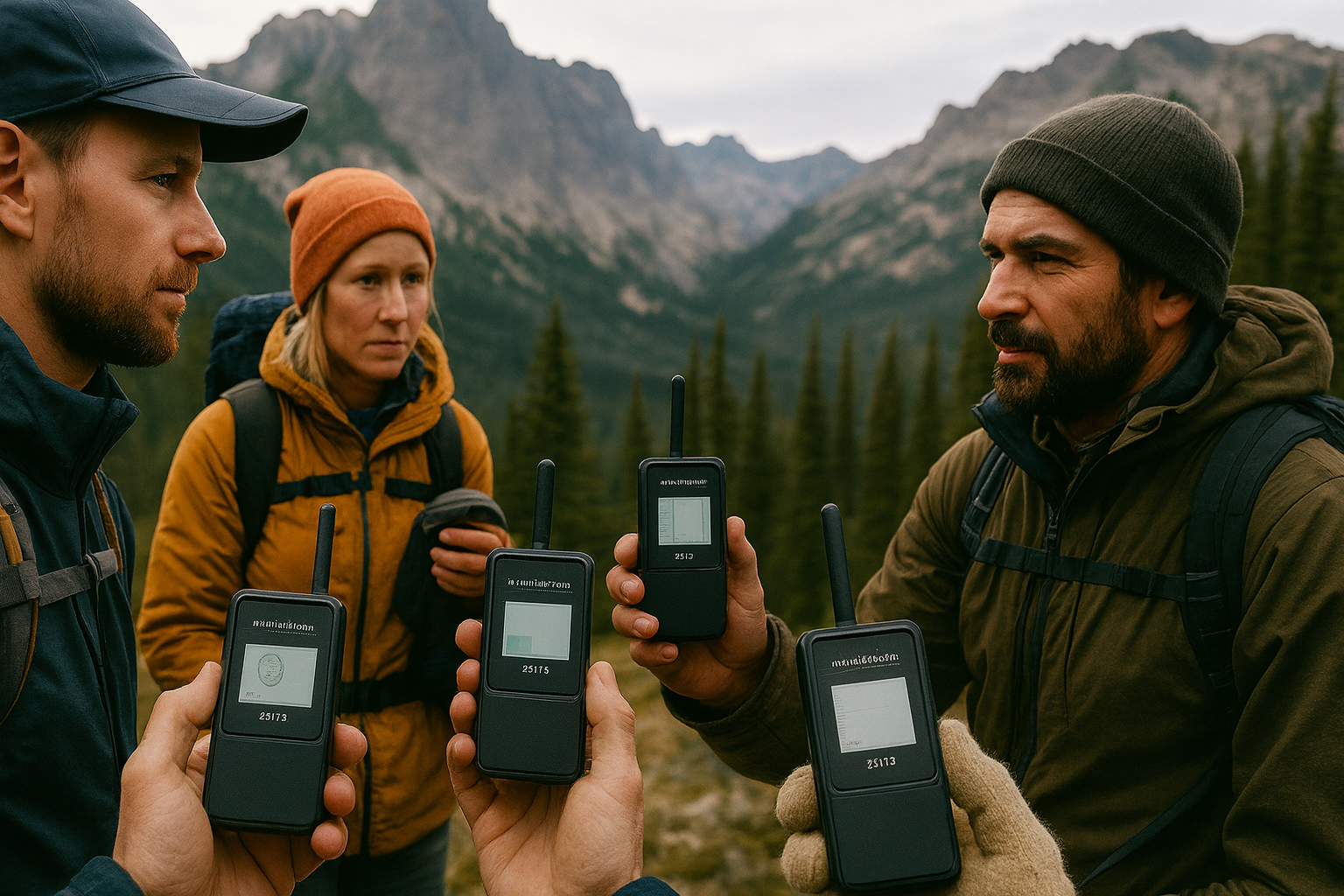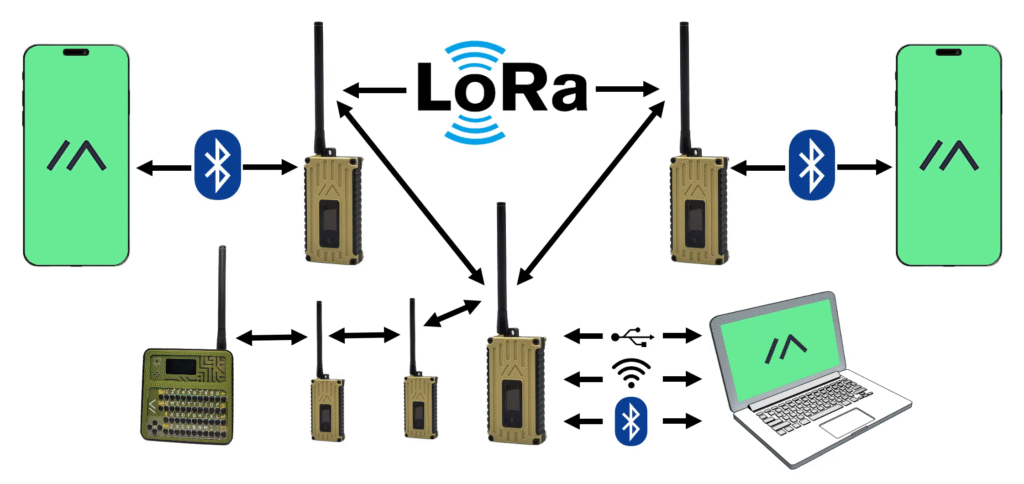Meshtastic Off-Grid Communication: Future of Connectivity

Meshtastic off-grid communication is rapidly becoming one of the hottest technology trends in 2025. In a world where internet connectivity is not always guaranteed, this open-source mesh network offers a reliable and affordable way to stay connected. Consequently, whether you are hiking, living in rural areas, or preparing for emergencies, Meshtastic provides a powerful alternative to traditional networks
Unlike traditional networks that depend heavily on cell towers or satellites, Meshtastic offers a lightweight, cost-effective, and resilient alternative. Consequently, it has quickly become one of the most searched topics on Google in 2025. But why is this sudden surge happening? And more importantly, how does it reshape the future of off-grid connectivity? Let’s explore.
What Is Meshtastic Off-Grid Communication?
To begin with, Meshtastic is an open-source project that transforms simple LoRa (Long Range) radios into a peer-to-peer communication system. In other words, instead of relying on the internet, these small devices connect directly with one another, forming a “mesh.”
Furthermore, every device in the network acts as a node. When one device cannot reach another directly, the message “hops” through multiple nodes until it reaches the destination. Thus, communication becomes both decentralized and extremely reliable.
Even better, Meshtastic integrates easily with smartphones via Bluetooth. This means users can send text messages, GPS coordinates, or sensor data—all without mobile service or Wi-Fi.
Why Is Meshtastic Off-Grid Communication Trending Now?
The reason behind Meshtastic’s popularity lies in a perfect blend of timeliness and utility.
- Firstly, extreme weather events and natural disasters are on the rise globally, creating a need for backup communication methods.
- Secondly, outdoor enthusiasts such as hikers, bikers, and campers increasingly look for safe ways to stay connected in remote areas.
- Thirdly, global conversations about decentralization—whether in finance, energy, or technology—are spilling over into communication systems.
As a result, Google searches for “Meshtastic setup,” “Meshtastic use cases,” and “Meshtastic hiking communication” have skyrocketed. Not surprisingly, blogs and videos explaining how it works are receiving record engagement.

Key Features of Meshtastic Off-Grid Communication
Meshtastic’s charm lies not only in its concept but also in its unique feature set. To clarify, let’s break down what makes it stand out:
- Off-Grid Messaging – Send text messages without internet or cellular service.
- GPS Location Sharing – Track group members in real-time, perfect for outdoor adventures.
- Expandable Network – Add more nodes to extend the coverage area seamlessly.
- Battery Efficiency – Devices run for days or even weeks on small batteries.
- Open-Source Flexibility – Customize firmware, build integrations, and adapt it to unique needs.
Thus, Meshtastic is not just a product; it is an entire ecosystem of possibilities.
Transitioning From Internet Dependence to Decentralized Communication
Ordinarily, people assume that communication requires either cellular service or Wi-Fi. However, Meshtastic challenges this assumption. Instead of top-down infrastructure, it builds bottom-up networks.
Moreover, this transition carries profound implications. Communities, for instance, can establish independent networks in case of censorship or outages. Similarly, event organizers can create private communication channels without paying hefty telecom fees.
Therefore, while it may appear like a small hobbyist tool, Meshtastic actually represents a much larger shift toward decentralization in communication.
Real-World Use Cases
Because Meshtastic is both flexible and affordable, its use cases are expanding rapidly. Let’s examine a few scenarios where it truly shines:
1. Hiking and Adventure Sports
Imagine a group of trekkers deep in the Himalayas. Mobile signals vanish within minutes. Nevertheless, with Meshtastic nodes in their backpacks, they can share messages, location pins, and even distress calls. As a result, safety improves dramatically.
2. Disaster Preparedness
Consider regions affected by earthquakes, floods, or hurricanes. Infrastructure often collapses. Yet, communities using Meshtastic can still coordinate relief efforts, share critical updates, and locate missing persons. In fact, agencies worldwide highlight mesh networks as vital for disaster recovery. For instance, FEMA’s emergency communication guidelines emphasize the importance of alternative communication systems when traditional networks collapse.
3. Rural Communities
Many villages around the world lack reliable internet. However, by deploying a few inexpensive nodes, residents can set up community-driven communication systems. Consequently, digital inclusivity expands without waiting for telecom giants.
4. Festivals and Large Gatherings
Think of music festivals or cultural fairs where thousands of people converge. Cellular networks often fail due to congestion. Nevertheless, Meshtastic can provide organizers with reliable backstage communication, volunteer coordination, and emergency alerts.
Getting Started With Meshtastic Off-Grid Communication
Since so many people are now searching “Meshtastic setup guide,” it’s worth walking through the basics.
- Purchase Compatible Hardware – Devices like Heltec LoRa or LilyGO boards are popular.
- Install the Firmware – Download Meshtastic firmware from the official GitHub repository.
- Pair With Smartphone – Use the Meshtastic app via Bluetooth.
- Create Your Network – Connect nodes, assign channels, and set up usernames.
- Test and Expand – Walk around, send sample messages, and add more nodes to grow the mesh.
Surprisingly, the setup is both beginner-friendly and highly customizable.
The Role of the Open-Source Community
Importantly, Meshtastic is not a corporate product but a community-driven project. Consequently, developers worldwide contribute new features, while hobbyists share tutorials, and enthusiasts build local networks.
This collaborative ecosystem ensures rapid innovation. Additionally, it guarantees that Meshtastic remains flexible, transparent, and aligned with the needs of its users rather than corporate interests.
Challenges and Limitations of Meshtastic Off-Grid Communication
Of course, no technology is without challenges. Meshtastic, despite its promise, faces certain limitations:
- Limited Bandwidth – Only small text messages can be sent. Large files are not feasible.
- Learning Curve – Non-technical users may find firmware flashing intimidating.
- Legal Restrictions – Some countries regulate LoRa frequencies, creating barriers.
- Scalability Concerns – Very large networks may experience delays.
Nevertheless, for its intended purpose—reliable off-grid messaging—Meshtastic remains highly effective.
Why Meshtastic Off-Grid Communication Matters for the Future
Step by step, people are realizing that connectivity should not be entirely dependent on corporations or governments. Instead, community-powered networks represent resilience, inclusivity, and innovation.
Moreover, as the Internet of Things (IoT) expands, low-power, decentralized communication tools like Meshtastic will become even more relevant. For instance, farms could monitor crops without relying on mobile towers. Likewise, local governments could deploy nodes for disaster management.
Therefore, Meshtastic is not simply a passing trend. It is a signpost for the future of communication.
SEO & Blogging Strategy
For bloggers and digital marketers, Meshtastic also presents a golden SEO opportunity. Since the keyword “Meshtastic” currently has low competition yet rapidly growing search volume, early adopters can rank content more easily.
Additionally, related long-tail keywords such as:
- “Meshtastic setup tutorial”
- “Best Meshtastic devices”
- “Meshtastic vs other mesh networks”
…offer excellent entry points for niche content clusters.
Consequently, a series of articles or tutorials could establish authority quickly and attract highly targeted traffic.
Conclusion on Meshtastic Off-Grid Communication
To sum up, Meshtastic is more than just a trending keyword—it is a movement toward decentralized, resilient, and community-driven communication. From hikers to rural residents, from disaster relief workers to festival organizers, countless people stand to benefit.
Yes, challenges exist. However, the opportunities far outweigh the limitations. Step by step, as more people adopt Meshtastic, we may witness the dawn of a new communication era—one where staying connected is no longer a luxury but a universal right.
Therefore, if you are curious, adventurous, or community-minded, now is the perfect time to explore Meshtastic. After all, the future of connectivity might not be built on towers or satellites—but on small devices linked together by people, for people.
FAQs
1. What is Meshtastic, and how does it work?
Meshtastic is an open-source communication system that uses LoRa (Long Range) radios to build a mesh network. In simple terms, instead of relying on the internet or mobile towers, devices connect directly with one another. Consequently, even if you are off-grid, your messages can “hop” through multiple nodes until they reach the recipient.
2. Can Meshtastic replace mobile networks?
Not entirely. While Meshtastic is excellent for short text messages and location sharing, it cannot handle voice calls or large data transfers. However, it is a reliable backup system for emergencies, hiking trips, or rural areas where mobile service fails. Therefore, think of it as a complement to mobile networks rather than a complete replacement.
3. How far can Meshtastic devices communicate?
The range varies depending on terrain, antenna quality, and device type. Generally, nodes can communicate 2–5 kilometers in urban areas and over 10 kilometers in rural or open regions. Moreover, because each device acts as a repeater, the effective coverage can extend much further as more nodes join the network.
4. Is Meshtastic legal to use everywhere?
That depends on the country. LoRa frequencies are regulated differently around the world. For example, in the U.S., Meshtastic typically operates in the ISM band (915 MHz), which is unlicensed. Conversely, in other regions, restrictions may apply. Therefore, before setting up, always check your local radio frequency regulations.
5. How difficult is it to set up a Meshtastic device?
Surprisingly, it is beginner-friendly. First, you flash the firmware onto a compatible LoRa device. Next, you pair it with your smartphone via Bluetooth. Finally, you join a channel and start sending messages. Although flashing firmware may sound intimidating, numerous tutorials exist. Consequently, even non-technical users can get started with a little patience.
“Innovation doesn’t wait. Neither should you. Partner with Hepmade Solutions to build digital solutions that keep you connected, always. 💡 [Talk to Us]”
#Meshtastic #OffGridCommunication #MeshNetwork #Connectivity #FutureOfNetworking #DecentralizedTech #TechInnovation #RuralConnectivity #DisasterPreparedness #DigitalTransformation

Don't miss Our Update. Subscribe us for more info.
Request Quote
What type of solution you are seeking?
Please Select One
Your estimated budget
Please Select One
 Hepmade
Hepmade 
 Automation
Automation 


